On the Road is a weekday feature spotlighting reader photo submissions.
From the exotic to the familiar, whether you’re traveling or in your own backyard, we would love to see the world through your eyes.
Happy Monday, everybody!
You’ll see from the schedule for the week that we are picking up on arrieve’s trip to Peru – if you want to take a look at the first 3 posts from the series before Wednesday, click here. Or you can wait until Wednesday morning when Part 4 appears, and click on the “Peru” tag that’s just under the title.
Albatrossity
We’ll have another week of Flyover Country birds, so that I can sort through and process images from my recent road trip to southeastern Arizona. As I am writing this, it has been less than 24 hours since I returned from that trip, and I have processed a few images so far, but it will take a while more to do that thoroughly. So those will have to wait a week. But the wait will be worth it, I promise! Especially if you like hummingbirds.
Last week’s Flyover Country birds were quite colorful; this week’s batch are less so. But Brown Is Beautiful too!
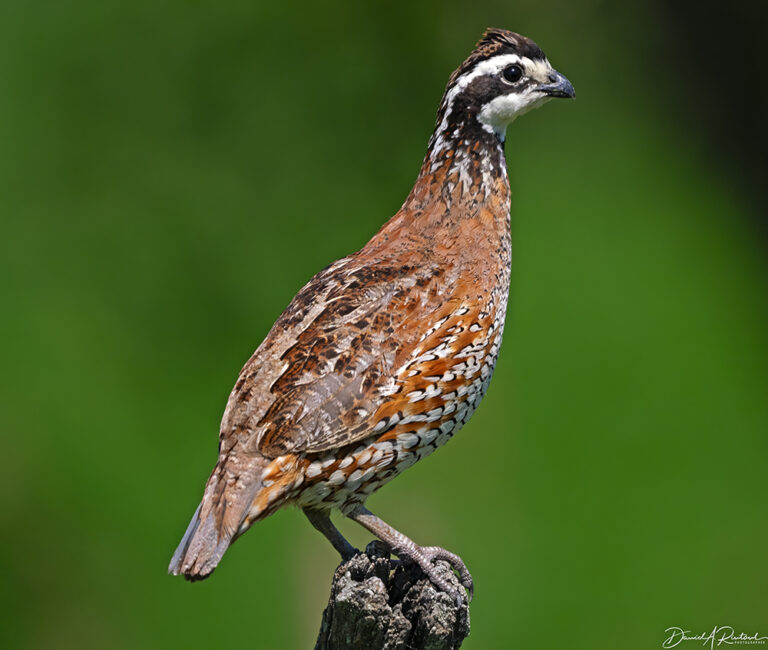
First up is a species that has had a couple of good years around here, the Northern Bobwhite (Colinus virginianus). I have heard and seen more of these in the past couple years, after a couple of decades of scarcity. Good news for a change, and here the Reverend Robert White is preaching it from the fencepost! Click for larger image.
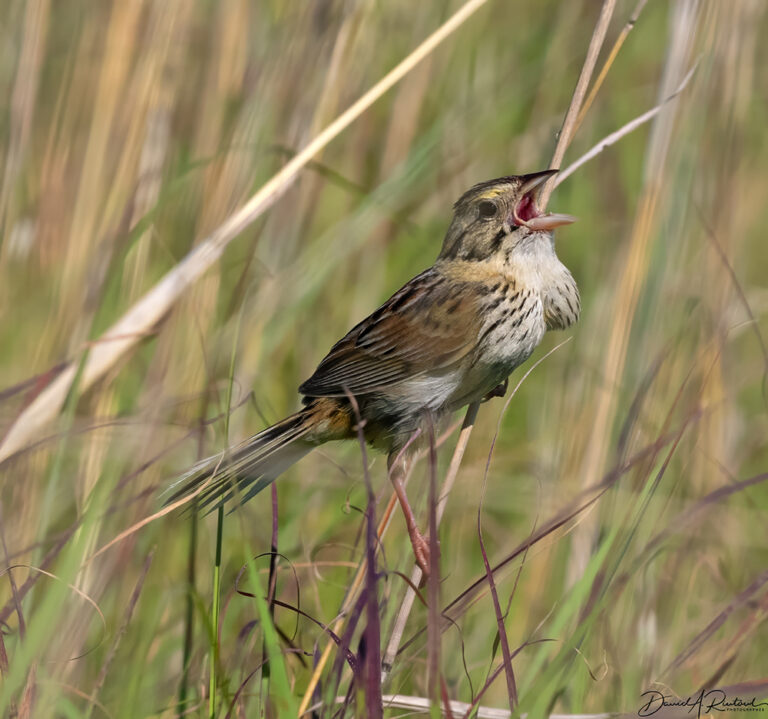
Another handsome denizen of the local prairies is also having a good year. This male Henslow’s Sparrow (Centronyx henslowii) was in full-throated :song”, along with many others on Konza Prairie this summer. The song is perhaps best described by C.M. Jones in 1881, and it is worth quoting in full: “The musical performance of this bird has very little to commend it. When the muse inspires his breast, he mounts to the top of a weed or some other object that raises him just above the grass. There he sits demurely until the spirit moves, when he suddenly throws up his head and with an appearance of much effort, jerks out his monosyllabic ‘tsip,’ apparently with great satisfaction. Then, having relieved himself he drops his head and waits patiently for his little cup to fill again. Somehow I cannot watch him while thus engaged, without a feeling of pity for a creature so constituted that he can be satisfied with such a performance” . Seems a tad harsh, at least to me. Click for larger image.
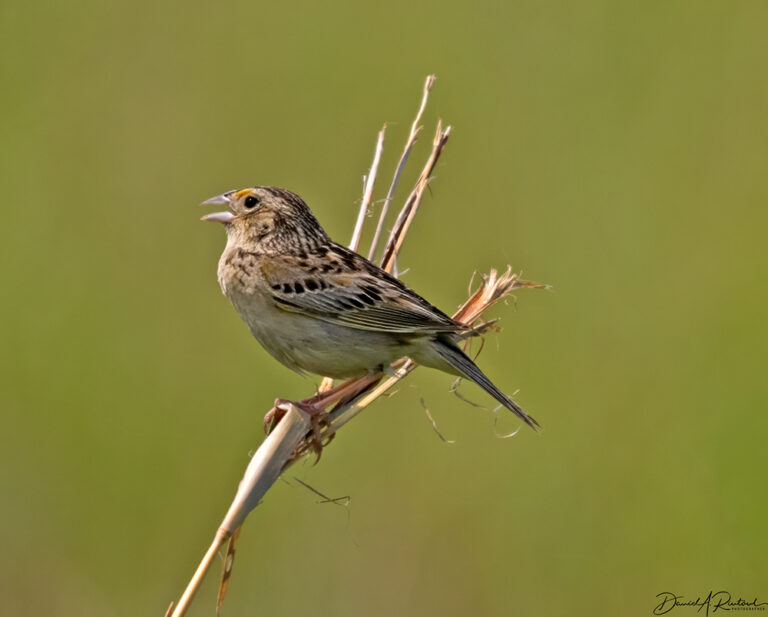
This Grasshopper Sparrow (Ammodramus savannarum) was also giving voice to song on Konza Prairie, and that song is somewhat more melodic and definitely less abrupt compared to that of the Henslow’s Sparrow. Last summer Grasshopper Sparrows were sparse around here; this summer there are a few more, but their numbers still seem lower than their historic numbers here in the heartland. Click for larger image.
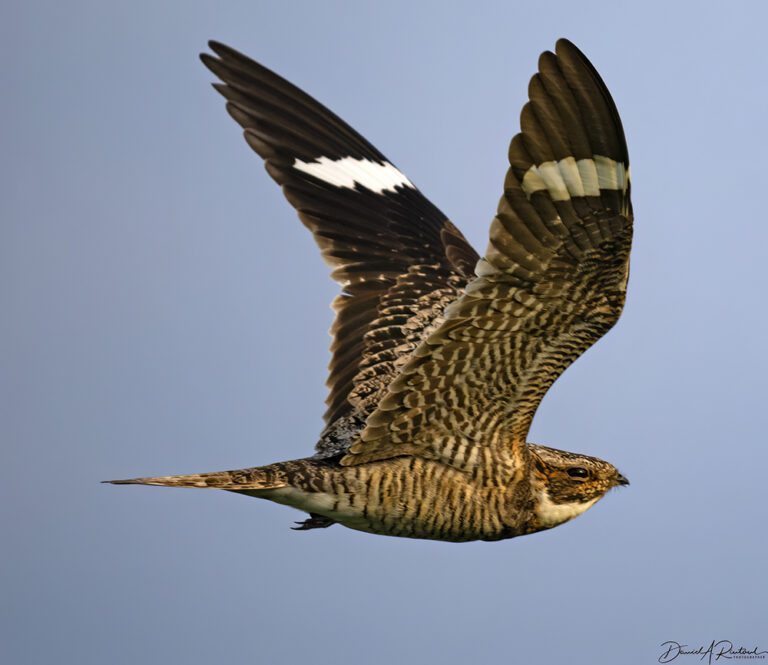
Another regular sight on our local prairies are the Common Nighthawks (Chordeiles minor). Declining numbers are the rule in much of its range, but so far, they seem to be holding their own here. Click for larger image.
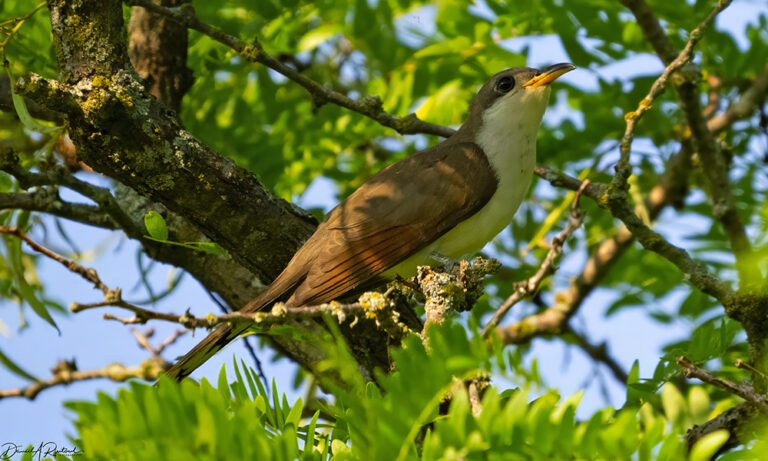
Yellow-billed Cuckoos (Coccyzus americanus) are also abundant this year, in the riparian strips along prairie streams and in the tree-enriched cities and towns. Known colloquially as the Rain Crow, they are furtive, slow-moving, and suspicious of all humans. But they are also physiologically amazing, since they only initiate breeding when food is locally abundant, and it only takes 17 days after the eggs are laid before the young cuckoos fledge and leave the nest! One might think that this behavior would be adaptive in these parlous times, but sadly, their populations are in decline range-wide. Click for larger image.
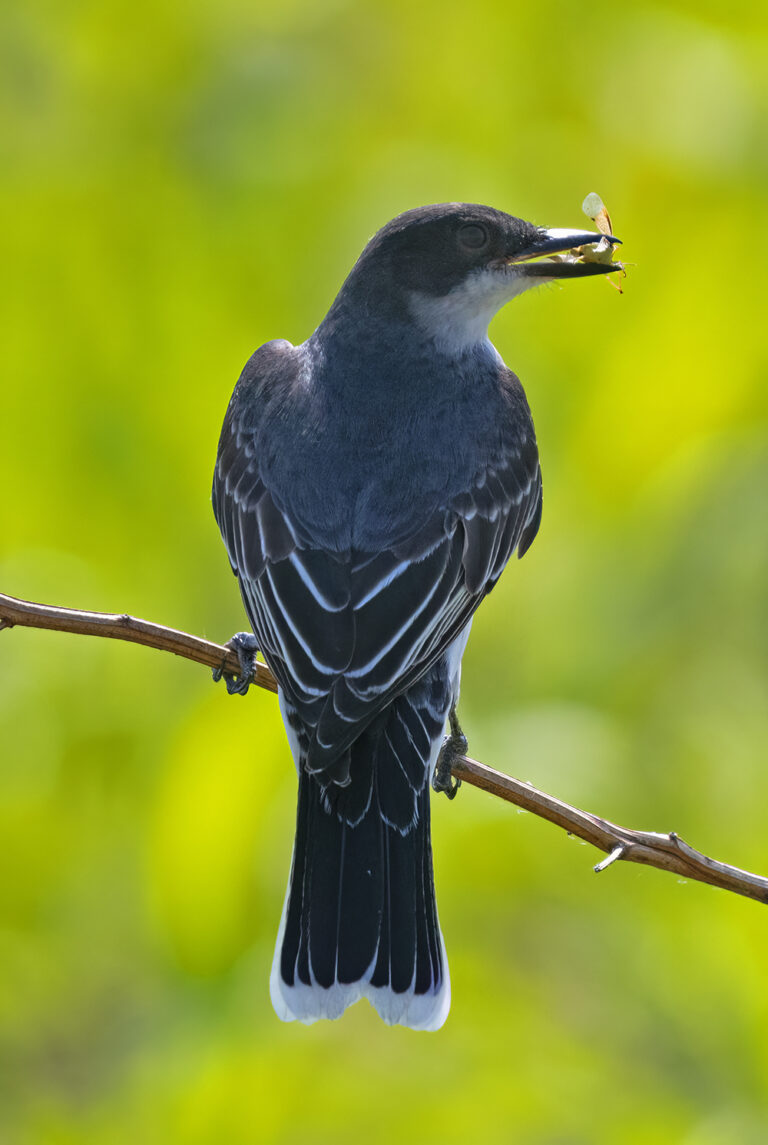
Eastern Kingbirds (Tyrannus tyrannus) are familiar insectivorous birds across much of North America. This one had a spicy dietary item, a stinkbug, but it seemed to relish that tidbit too. Click for larger image.
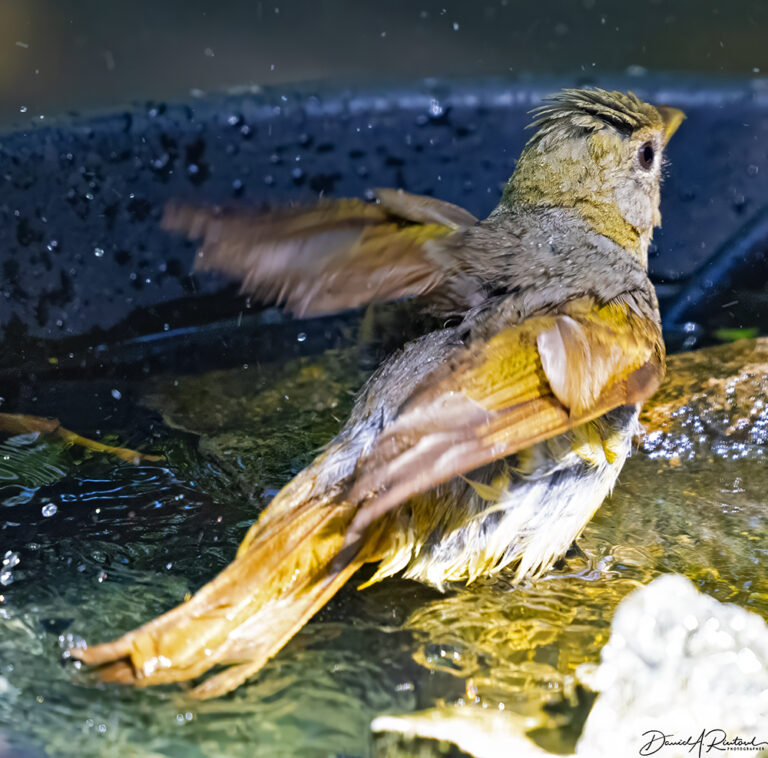
Last week’s post featured the Summer Tanagers (Piranga rubra), and this week I can report that our neighborhood tanager pair successfully fledged at least one youngster, who was having a splashy bath on the back deck as I returned from my photo walkabout to Arizona. I hope it can successfully migrate to the tropics and back, to grace our neighborhood or some other neighborhood next summer! Click for larger image.
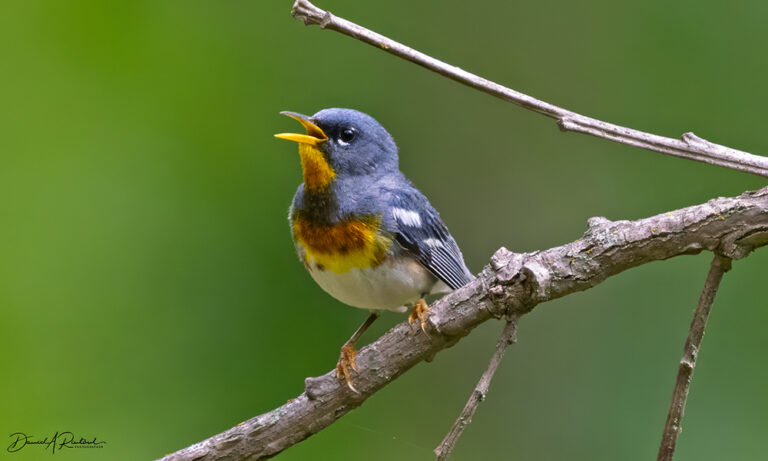
I will include at least one colorful bird, this male Northern Parula (Setophage americana) was still singing as if it was his first spring day back on territory. Hopefully that means that a first clutch of youngsters had successfully fledged, and he was hoping to get a second clutch raised prior to the fall migration. Click for larger image.
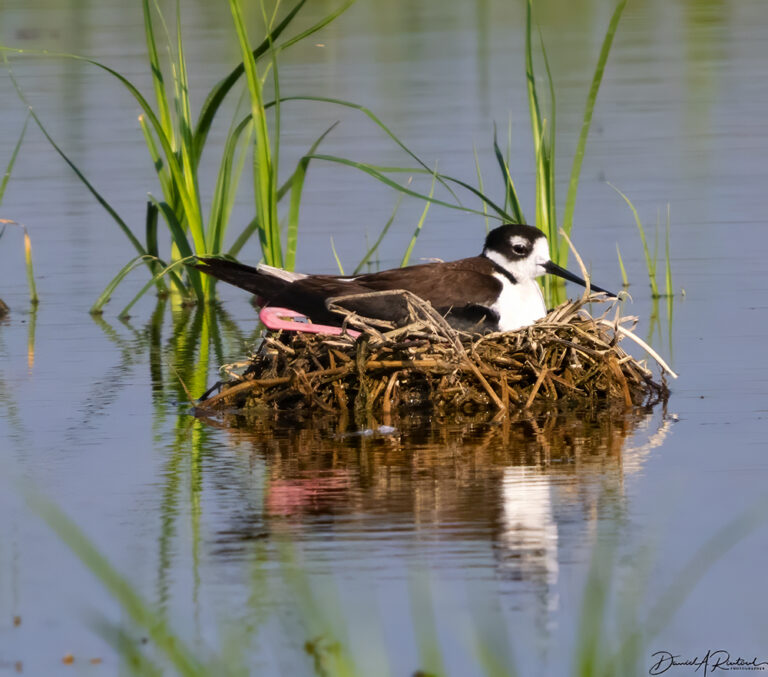
I also made a day trip to Quivira National Wildlife Refuge, which had a serious water shortage starting in the fall 0f 2022. That shortage has persisted over the summer, thanks to some Trump-era chicanery resulting in an agreement between the USFWS and local irrigators that leaves the refuge short of water. Most of the refuge pools were either dry or held substantially less water than usual for this time of year. But at least one pair of Black-necked Stilts (Himantopus mexicanus) had built a nest and were hopeful that they were raising the next generation of stilts. Click for larger image.
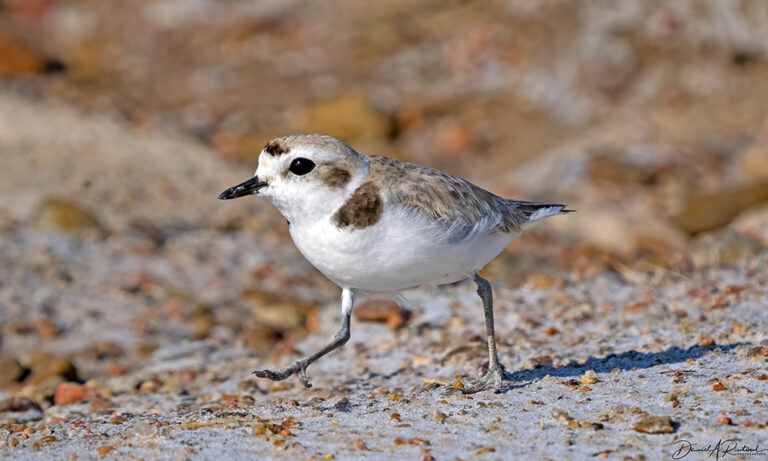
Another perky shorebird that is regularly seen at Quivira each summer, the Snowy Plover (Charadius nivosus) is frankly adorable (although they probably think that they are bad-asses). Habitat loss at Quivira would not be a good outcome for these guys, since their coastal populations have been under stress for a few decades now. Click for larger image.

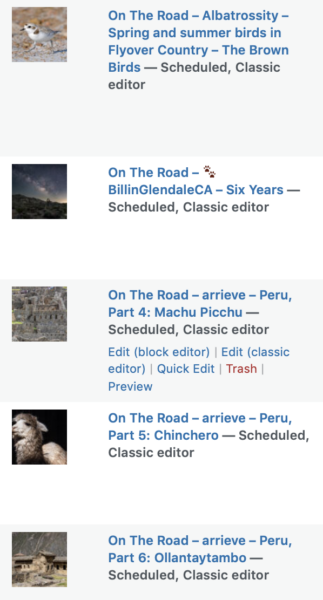
HinTN
Here’s the corrected address for the bigger version of the stinkbug dinner.
Link
Lovely photos and descriptions, as always, Albatrossity.
Betty Cracker
Lovely photos! The Yellow-Billed Cuckoo reminds me of our Mangrove Cuckoos here in FL. Very skittish so difficult to spot. I’ve only managed to see one.
Dr. Jakyll and Miss Deride
I know it’s not strictly correct, but could we call the youngster in photo 7 a tanager teenager?
Betty
@Betty Cracker: I was thinking the same thing about the cuckoo. We can tell when they are around because of their distinct call.
And the plover is adorable.
mvr
Of course I especially like the nighthawk photo. (I’m nothing if not predictable.)
In my bit of flyover country, I just heard but did not see the first Carolina Wren of the year. I thought they were gone, so that was pleasant and surprising.
Thanks,
-Mark
Albatrossity
@mvr: Carolina Wrens are here in NE Kansas year-round. They do get quiet in the nesting and baby-rearing months, but definitely start to get more vocal at this time of year.
mvr
@Albatrossity: Thanks! That’s good to know.
This time of year was when I first noticed them around 2019. And then for a few years I saw them at intervals throughout the spring and summer into the fall. I made some birdhouses customized to their preferences, but so far as I know no Carolina Wren used them (house sparrows did). The neighbor’s garage where I noticed them nesting in the eves got repaired last year, and since then I had not seen nor heard any.
So thanks for that information!
-Mark
SteveinPHX
Great photo of Parula Warbler! Thank you.
stinger
So the Henslow’s Sparrow says what he has to say and then stops? Unlike Mr. Jones, I feel not pity but respect. Would that more of us had a similar self-knowledge and discipline!
way2blue
Mr Bob White is gorgeous. Must be hard, following the local bird populations for years, to see their numbers decline with the loss of habitat & other stressors. For me, I miss hearing the coyotes bay in the middle of the night. Rarely see any red-tailed hawks these days. Did see some quail on my Saturday walk though. And a little cotton-tail rabbit. And here we are…
ronno2018
great calming photos, thanks!